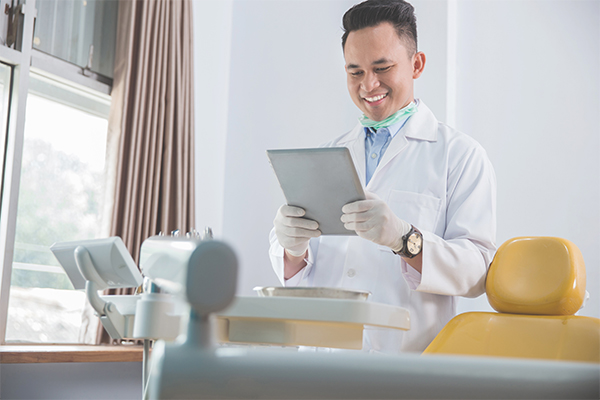Do Dentists Recommend Teledentistry
 Teledentistry has become increasingly popular as the COVID-19 pandemic forced many healthcare providers in the U.S. to limit their services. As a result, teledentistry is becoming a standard first step before a dentist is seen for an in-person visit.
Teledentistry has become increasingly popular as the COVID-19 pandemic forced many healthcare providers in the U.S. to limit their services. As a result, teledentistry is becoming a standard first step before a dentist is seen for an in-person visit.
A growing number of dentists now recommend teledentistry, and many are implementing it into their practices. Patients being able to get treatments they need without stepping into a clinic protects them and dental workers during flu season.
How teledentistry works
Teledentistry is a branch of telehealth – which is a technology-driven approach to healthcare. It involves dentists using the internet and communication technology to remotely treat their patients. It often involves:
- Live video chats: These can be used to perform visual examinations and diagnose oral issues.
- Store and forward transmission: This is used to securely transmit x-rays, digital images, videos and radiographs that are used to diagnose and treat patients.
- Remote patient monitoring (RPM): This involves using medical devices to collect important information about a patient’s condition. The information is then relayed to the dentist or healthcare provider who is monitoring the patient.
- Mobile dentistry: This involves educating patients and recommending treatments for oral issues over the phone or other means of digital communication, like emails.
Prior to the outbreak of the COVID-19 virus, teledentistry had been used to serve patients who live far away from the closest dentist or lack access to dental facilities. Now, it is a great option for those who need dental care for a non-emergency.
How teledentistry works
Teledentistry involves virtual visits between dentists and their patients using communication technology, like video chats. These meetings take place in real-time and the patient can connect from anywhere on the planet with internet access.
These virtual consultations can be used to educate the patient on how to take proper care of their teeth or where to get the treatment they need. It helps to free up emergency rooms by allowing patients to see a dentist at off-hours.
Being able to chat with a dentist remotely lowers costs for patients. It leads to less time being taken off work or other scheduled activities and reduces travel expenses.
Visit our virtual dental clinic
If you want freedom in your schedule, teledentistry can be a great start in improving your oral health. During a virtual consultation, our dentist can evaluate your problem over a video chat and inform you if you need to visit the clinic. They can also educate you about ways to address oral problems that do not require emergency dental care. Call our Port Charlotte clinic to learn more about how we are helping our patients receive care on their time.
Request an appointment here: https://dragonflydentalportcharlotte.com/teledentistry-consultation/ or call Dragonfly Dental of Port Charlotte at (941) 676-9225 for an appointment in our Port Charlotte office.
Related Posts
Continuing developments in mobile technology have made teledentistry an option for many patients. With this relatively new approach to oral health, people can connect with a dental professional when visiting in person is not a viable or wise choice. Locations that offer this option can instruct patients on what is needed to perform a virtual…
Patients can get the diagnosis, advice, and emergency treatment they need through teledentistry and emergency dentistry services. It is helpful to understand what teledentistry is and how it can help with urgent dental problems, so you can determine if you should schedule an appointment.More dentists than ever before are utilizing teledentistry as a way to…
Teledentistry provides a way for dentists to provide treatments remotely to patients who are dealing with non-emergency dental issues. As a cultural change following the COVID-19 outbreak, patients will usually opt to receive a virtual visit before coming to the office. Many dentists also ask that if a patient is feeling under the weather, to…
